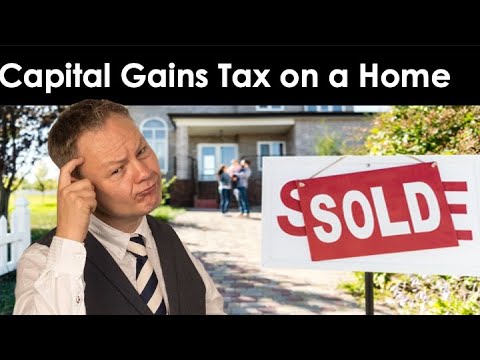
In the UK, owning a second home can be an exciting venture, offering the opportunity to escape to your own personal oasis or generate extra income. However, it’s important to understand the implications of capital gains tax and the exemptions that may apply. This article aims to provide clarity on how to avoid capital gains tax on second homes in the UK legally, allowing you to make the most of your investment without any unexpected financial burdens. By the end of this article, you’ll have a clear understanding of the exemptions available and the steps you can take to minimize your tax liabilities. Whether you’re a seasoned property owner or considering purchasing a second home, this information will undoubtedly be invaluable.
What is Capital Gains Tax?
Definition of Capital Gains Tax
Capital Gains Tax (CGT) is a tax that is payable by individuals or companies on the profit made from the sale or disposal of certain types of assets. It applies to various assets such as property, shares, and personal possessions. When you sell an asset for more than you paid for it, the profit you make is known as a capital gain, and you may be liable to pay tax on this gain.
Applicable Rates
The rates for Capital Gains Tax vary depending on the type of asset and the individual’s income tax bracket. In the UK, the standard rate of CGT for most individuals is currently 20% for higher and additional rate taxpayers, and 10% for basic rate taxpayers. However, there are different rates for residential property and carried interest, and certain reliefs and exemptions may apply, which can impact the overall tax liability.
Understanding Second Homes
Definition and Types of Second Homes
A second home refers to a property that is not your main residence but is instead used for recreational purposes, investment purposes, or as a holiday home. It is a property where you do not permanently reside but visit on a periodic basis. Second homes can take various forms, such as cottages, apartments, chalets, or even caravans. These properties are usually purchased for personal enjoyment or as an investment to generate rental income.
Capital Gains Tax on Second Homes in the UK
Overview of CGT on Second Homes
When it comes to selling a second home in the UK, Capital Gains Tax may be payable on any profit made from the sale. However, it is important to note that if the property is considered your main residence at some point, it may be eligible for certain tax exemptions and reliefs, which can significantly reduce or even eliminate the Capital Gains Tax liability.
Private Residence Relief
Definition and Scope
Private Residence Relief, also known as Principal Private Residence Relief (PPR), is a significant tax relief that can exempt individuals from paying Capital Gains Tax on the sale of their main residence. This relief applies to the property that you have used as your main residence for the duration of your ownership. The relief covers the period you have occupied the property as your main residence, as well as certain additional periods, such as the last 9 months of ownership even if you have stopped using the property as your main residence.
Period of Occupancy
To qualify for Private Residence Relief, the property must have been your main residence at some point during your ownership. The length of time you have occupied the property as your main residence will determine the amount of relief you can claim. It is important to keep accurate records of your occupancy periods, including any periods when the property was let out or used as a second home, as these may affect the availability and extent of Private Residence Relief.
Case Study: Using Principal Private Residence Relief
Real Estate Example
Let’s consider a case study to illustrate how Principal Private Residence Relief can be utilized to minimize Capital Gains Tax on a second home. Suppose you purchased a second home for £500,000 and sold it for £700,000 after three years. During the three years of ownership, you used the property as your main residence for 18 months and let it out for the remaining 18 months.
In this scenario, you would be able to claim Principal Private Residence Relief for the 18 months that the property was your main residence, as well as an additional 9 months as a final period exemption. This means that 75% of any gain made during the ownership would be exempt from Capital Gains Tax, resulting in a reduced tax liability.
Utilizing EIS to Reduce Capital Gains Tax
Understanding how EIS helps avoid CGT
EIS offers several ways to reduce or avoid paying capital gains tax on the sale of a second home. By reinvesting the gains into qualifying EIS companies, you can defer the payment of CGT until you sell your investment in those companies. This can be especially beneficial if the gains from the sale of your second home are substantial.
Investing in qualifying EIS companies
To take advantage of EIS and its associated tax benefits, it is essential to invest in qualifying EIS companies. These are small, high-risk companies that meet the necessary eligibility criteria set out by the government. It’s important to carefully evaluate potential EIS companies before investing to ensure they align with your investment goals and risk tolerance.
EIS reliefs and exemptions
Investing in EIS-qualifying companies can provide relief from capital gains tax on second homes. As mentioned earlier, if you hold your EIS investment for at least three years, any gains you make from selling your shares will be exempt from CGT. This exemption can significantly reduce your overall tax liability and provide a tax-efficient way to invest in promising businesses.
Timeframe considerations for EIS
When utilizing EIS to reduce capital gains tax, it’s important to consider the timeframe. EIS investments require a minimum holding period of at least three years to access the CGT exemption. Therefore, it’s crucial to align your investment goals and financial plans with the necessary timeframe, ensuring you have sufficient liquidity and can accommodate any potential fluctuations in the market.
Capital Gains Tax Allowance
Annual Exempt Amount
Every individual has an Annual Exempt Amount, which is the amount of capital gain you can make from the sale of assets before Capital Gains Tax becomes payable. As of the tax year 2023/2024, the Annual Exempt Amount for individuals is £6,000 but will go down to £3,000 from April 2024. This means that if the total capital gains made in a tax year are below this threshold, no Capital Gains Tax is payable. It is worth considering how to utilize this allowance effectively to minimize your tax liability on the sale of second homes.
Strategies to Minimize Capital Gains Tax
Timing of Sale
One strategy to minimize Capital Gains Tax on second homes is to carefully consider the timing of the sale. By timing the sale to fall across different tax years, you can utilize the Annual Exempt Amount for each year, effectively reducing your overall tax liability.
Transferring Ownership
Transferring ownership of a second home can also be a tax-efficient strategy. By transferring a portion of the property to a spouse or a partner, you can potentially take advantage of their Annual Exempt Amount, thereby reducing the taxable gain when it comes to selling the property.
Seek Professional Advice
Consulting Tax Experts
Navigating the complexities of Capital Gains Tax on second homes can be challenging, and making mistakes can result in costly tax liabilities. Therefore, it is highly advisable to seek professional advice from tax experts who specialize in property taxation. A tax professional can help you understand the specific rules and regulations, determine the applicable exemptions and reliefs, and ensure that you comply with all the necessary requirements to minimize your Capital Gains Tax liability effectively.

